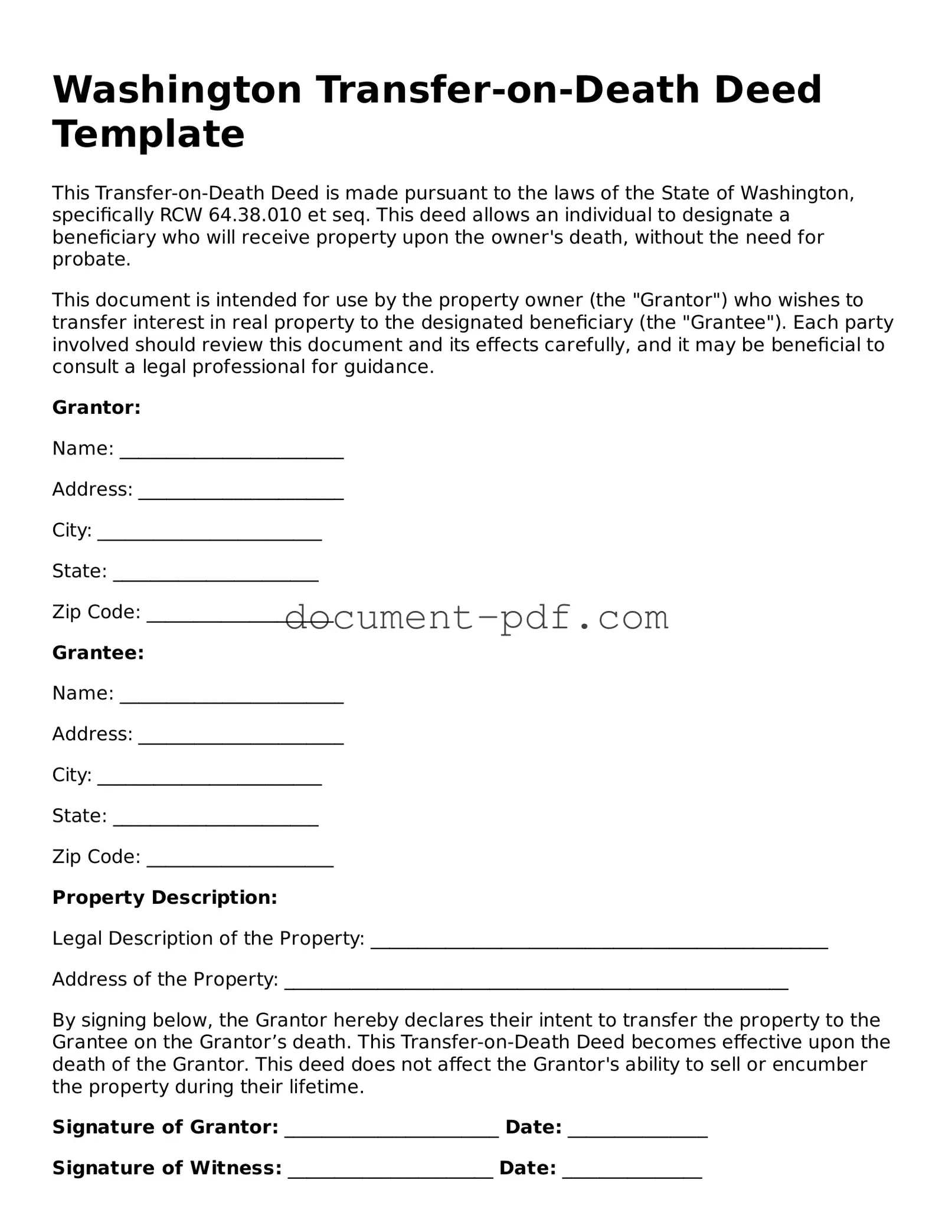Washington Transfer-on-Death Deed Template
This Transfer-on-Death Deed is made pursuant to the laws of the State of Washington, specifically RCW 64.38.010 et seq. This deed allows an individual to designate a beneficiary who will receive property upon the owner's death, without the need for probate.
This document is intended for use by the property owner (the "Grantor") who wishes to transfer interest in real property to the designated beneficiary (the "Grantee"). Each party involved should review this document and its effects carefully, and it may be beneficial to consult a legal professional for guidance.
Grantor:
Name: ________________________
Address: ______________________
City: ________________________
State: ______________________
Zip Code: ____________________
Grantee:
Name: ________________________
Address: ______________________
City: ________________________
State: ______________________
Zip Code: ____________________
Property Description:
Legal Description of the Property: _________________________________________________
Address of the Property: ______________________________________________________
By signing below, the Grantor hereby declares their intent to transfer the property to the Grantee on the Grantor’s death. This Transfer-on-Death Deed becomes effective upon the death of the Grantor. This deed does not affect the Grantor's ability to sell or encumber the property during their lifetime.
Signature of Grantor: _______________________ Date: _______________
Signature of Witness: ______________________ Date: _______________
If there are multiple Grantors, each should sign below:
- Signature of Additional Grantor: _______________________ Date: _______________
- Signature of Additional Grantor: _______________________ Date: _______________
This document must be recorded in the office of the county recorder in the county where the property is located. It's essential to keep a copy for personal records.
Note: This Transfer-on-Death Deed can be revoked by the Grantor at any time during their lifetime by executing a new deed or a revocation document.
